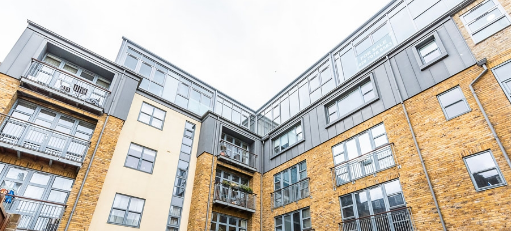The UK Urban residential sector is struggling. Supply and demand for land and living has never been so challenging. There is a chronic shortage of affordable housing with a shortfall of 20,000 homes in the capital alone. Throw a devastating virus and Brexit into the mix….
Yep, it’s a tough year, yet housing is still high on local government agendas. So what’s happening with the government’s initiative and its long consultation for building up?
Coming into effect on 1st August 2020, the new permitted development right (PDR) enables property owners and freeholders to progress with upward extensions of two additional storeys on detached blocks of purpose-built flats without the need for planning permission!
Such developments remain, however, subject to a number of approvals and there are exceptions.
SO WHAT ARE AIRSPACE DEVELOPMENTS EXACTLY?
Airspace development refers to the creation of new homes in the ‘air-rights’ on top of existing buildings (think an average of two more levels up). Think of all those city rooftops…
By “air-rights”, we mean rights of developing within unused air space above an existing property.
We have taken an excerpt from Practical Law:
A type of development right. Rights to control and develop a specific amount of unused air space above real property. A property has air rights if either:
- The property is vacant.
- The improvements on the property are smaller than state and local laws permit.
The rest of the notice is HERE if you’d like to read more.
By utilising existing rooftops, as the example we’re giving in this post, construction won’t cause too much disruption to local communities plus the skylines of our cities won’t change drastically.
WHY ARE THERE DELAYS IN CONSTRUCTION AND BUILDING?
Owing to Covid 19 and Brexit, the construction sector has been hit badly, causing a delay on the builds of new housing, extensions, etc. There were huge delays with planning application reviews as councils have been under immense pressure to deliver quality.
HMRC announced a delay to the introduction of the domestic reverse charge for construction services until 1 March 2021 owing to the impact of the Coronavirus on the construction sector. Together with the HMRC making changes to the exclusion requirements of end-users and intermediaries. The start date for the new (incredibly convoluted) CIS Domestic Reverse Charge VAT was moved to October 2020 due to a mixture of Brexit resources on the HMRC, Covid furloughing and the basic fact that the construction industry and software companies simply weren’t ready.
The reason why the reverse charge needs to kick start is the fact that it must combat supply chain VAT fraud, which is rife in the industry.
WHEN WAS THE FIRST AIRSPACE DEVELOPMENT COMPLETED?
Corben Mews, within Battersea’s Nine Elms regeneration area, was the first development of its kind to be finished since the announcement was made. It was completed in spring 2019 and the government relaxed the rules in autumn 2018.
It was the first modular ‘airspace’ development to be built since the government relaxed ‘permitted development rules’ to allow existing buildings to have residential ‘top floors’.
A government representative told The Negotiator in April 2019 that,
“National planning policy is clear that to support housing delivery we should make effective use of previously developed land and buildings, including the airspace above existing buildings, to create new homes.”

WHEN DOES THE LAW COME INTO PLAY?
LEASES
Conflicts can arise between an existing lease and a proposed redevelopment. Residential tenants will know that their leases contain obligations that their landlord owes to them and visa versa (and if they don’t, they should!)….yes, we’re talking covenants and one of these in the majority of residential leases is “quiet enjoyment”.
The quiet enjoyment clauses might be breached by the Landlord’s proposed development if the construction works essentially interfere with the tenant’s enjoyment of their property. What if rights are already in place with the existing tenants to use the roof space and all the rights that go with being able to use that space entails (a quick example is a garden)? A lawyer specialising in property and leases will know how to cover all eventualities.
ANY DEVELOPMENT MUST TAKE INTO CONSIDERATION THE FOLLOWING FACTORS:
- Telecomms and their masts
- Health & safety
- Rights of light
- Insurance
- Residential Tenants’ right of first refusal
- Party Walls
- Collective Enfranchisement
Here at LMP Law we cannot emphasise enough how important a well drafted lease is. A lease should reserve enough rights for the freeholder to undertake further development on parts of the property not already granted. There are so many issues and complexities in drafting correct clauses to overcome so many possible obstacles, such as breaches of “quiet enjoyment” for existing residential tenants (the top apartment dwellers ….. they won’t be any more).
FINAL THOUGHT
Vertical urban developments had a blip this year but it’s been given the extra push to move it forward with less hassle. Only time will tell if this approach will be effective, but in the meantime we’d urge any developer or landlord to speak to a specialist legal team before investing too heavily – airspace developments are convoluted when it comes to legal issues, there are so many variables to consider.
If you would like to chat with any of our team at LMP Law, here’s our contact link right HERE. We’d love to hear from you.






